Extract 5: Near Death Experiences
December 27, 2012
Contemporary Near-Death Studies
Price has given us a coherent and meaningful conceptual framework for after-death experiences. In contrast to other scenarios, Price’s hypothesis is both compatible and continuous with earthly human existence. Recent scientific work with persons who have had close encounters with death offers some tentative, yet tantalizing, evidence that Price’s ideas may be more than just hypothetical. Definite patterns have emerged in the 3,000 cases studied so far, and I shall extract the points which are relevant with regard to Price’s hypothesis and my humanist eschatology.
Almost without exception, the patients reported that they found themselves outside their physical bodies. Although most of them did not speak of a spiritual body, they all described their experiences in terms of definite spatial-temporal relations. According to the accounts, the subjects claimed to have had supernormal powers, e.g., the ability to see into other rooms. Kenneth Ring’s patients also reported a “state of heightened mental clarity dominated by a (subjective) sense of logic, detachment, and rationality” ( Life at Death: A Scientific Investigation of the Near-Death Experience [New York: Coward, McCann & Geoghegan, 1980], p. 92; see also Michael B. Sabom, Recollections of Death [New York: Harper & Row, 1981]; and Raymond A. Moody, Life after Life [New York: Bantam Books, 1976]).
Except for one study done by Maurice Rawlings, there were virtually no accounts of negative experiences and no signs of external judgment. Contrary to widespread opinion, even those who survived suicide attempts told of feelings of bliss and contentment. Maurice Rawlings claims that up to half of his cases contained “hellish” elements. Rawlings contends that most researchers interview their subjects too late, and that the negative dimensions of their near-death encounter have all been suppressed. As a cardiologist involved in many resuscitations, Rawlings has had the opportunity to speak to these people soon after their traumas. (See Maurice Rawlings, Beyond Death’s Door [Nashville: Thomas Nelson, 1978].).
Ring does not deny the possibility of some negative elements in the near-death experience, but he suspects that Rawlings has exaggerated their frequency. First, Rawlings, like Raymond Moody, has no statistical control over his data. Second, the suppression hypothesis does not seem to be borne out by data drawn from other areas, like bad drug trips. Third, Michael Sabom is also a cardiologist involved in resuscitation and he does not report any hellish accounts. Fourth, Rawlings does not hide the fact that he is writing from a conservative Christian standpoint and that he is intent on demonstrating that the negative experiences are the result of not turning to the Lord. But Ring points out that Osis and Haraldsson’s cross-cultural study, containing many non-Christians, did not show signs of judgment or damnation (pp. 193-4).
Most of the subjects interviewed said they went through a dark tunnel to a realm of light. Moody’s patients said that they met a great being of light, identified by many as Jesus or God. Sabom and Ring’s subjects did not report so much an individual being as a presence that which was usually not described in religious terms. Moody’s being of light is explained in terms of total compassion–gentle and persuasive, never judgmental–and this being instigates a total review of the subject’s life.
Only twenty-five percent of Ring’s subjects reported life- reviews with the highest frequency among accident victims (55%). Ring’s patients generally described the life-review in terms of a crucial decision about whether to go back to the body or to continue on to final death. One subject reported that the presence gave him a choice, and another woman said who “had a decision to make and…it was totally up to me (pp. 67, 73). One suicide survivor gave the following account: “The only thing I felt judged by would be myself. Like in the very beginning, when I thought about these things, all these terrible things, then I thought about the good things, then it felt like I’d just run through my life and I’d think of all the stupid things… all the mistakes I’ve made. I think the judging was mainly myself judging myself” (p. 169).
On the basis of this report and others like it, Ring suggests that the presence is actually the higher self encouraging the ordinary self on to full self-actualization. Ring himself has been profoundly influenced by Paul Brunton, an English mystic who explains the preceding point this way: “Through (the Overself’s) eyes he will gaze afresh at the total impression rather than the episodal detail of his early life. Through its revelatory eyes he becomes his own incorruptible judge” (The Wisdom of the Overself [New York: E. P. Dutton, 1945], p. 55).
Critics say that there must be natural explanations for these experiences. Some, for example, have proposed that some of the details–a long, dark tunnel, loud ringing noises, a brilliant light–might simply be a mental replay of the process of birth. Still others claim that these experiences constitute some type of hallucination. In their books Ring and Sabom gives plausible counter-arguments to these and other naturalistic explanations of near-death encounters. In contrast to most of the reports, Ring and Sabom’s investigation of 220 subjects was done under rigorous empirical controls. For example, Sabom was able to demonstrate that his clinically dead subjects were able to give correct descriptions of medical attempts to revive them.
Source: Class.uidaho.edu

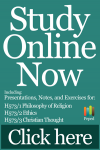
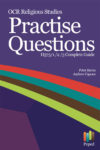
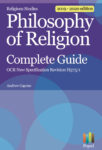
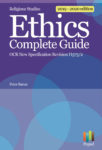
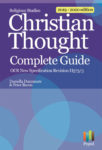
0 Comments